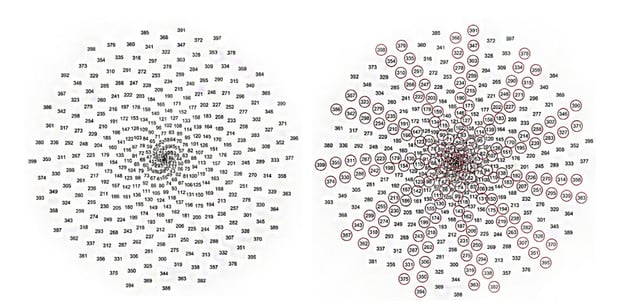The Aesthetics of Algorithms: A Neuroinformatic Perspective on Beauty
The concept of beauty, both in its descriptive and theoretical dimensions, has always been a subject of contemplation and analysis by philosophers and thinkers throughout history. In ancient times, beauty was closely associated with goodness, idealism, virtue, and the absolute. In modern discourse, the term aesthetics (or the science of beauty) emerged as a study of sensory perceptions, inferential and critical thinking. Aesthetic perception can be described as an algorithmic sequence in which material inputs, imagination, emotions, and cognitive memory interact, producing diverse and distinct impressions and sensations. Intellectual impressions and sensory feelings are essentially the outcomes of complex neural network pathways, analogous to the intricate digital relationships and computational algorithms that structure artificial systems.
AESTHETIC ALGORITHM & COMPUTATIONAL CREATIVITY
Nessreen Y. Ibrahim, Ph.D.
1/1/20222 min read
Geometric study of algorithmic model of phyllotaxis pattern by mimicking the spiral arrangement matrix. (Visual algorithmic programs; Rhinoceros/Grasshopper). Source: Generative Algorithmic Design by Nessreen Y. Ibrahim (Author).
The Aesthetics of Algorithms: A Neuroinformatic Perspective on Beauty
Nessreen Y. Ibrahim
SOURcE: Ibrahim, N. (2022). 'Aesthetic Theorizing ... and the Concept of Aesthetic Algorithms', Journal of Design Sciences and Applied Arts, 3(1), pp. 100-107. doi: 10.21608/jdsaa.2022.73622.1108
Algorithms are defined as a set of logical procedural steps aimed at achieving a specific output. The term algorithm—or logarithm as it was once known in English—was named after its inventor, Abu Ja'far Muhammad ibn Musa al-Khwarizmi, a 9th-century scholar. Al-Khwarizmi, also known as "Abu al-Jabr" for his role in distinguishing algebra from arithmetic and formalizing it as an independent discipline, introduced a new conceptual framework for structured rational processing of inputs or data to derive specific results or solve problems.
Today, algorithms play a central role in computer programming, as modern software relies on algorithms designed in the form of mathematical functions. The rapid advancements in artificial intelligence (AI), particularly since the 1960s, are a direct outcome of the algorithmic revolution.
In the past two decades, art has increasingly become a field of application for digital computing and machine learning a branch of AI that operates through algorithmic models. This integration has opened new frontiers, heralding a flood of intelligent artistic applications. Digital aesthetics, also known as computational aesthetics, is defined as a hybrid form of beauty that combines the limitless technological capabilities of computational systems with the culture of synchronized interactive production and communication. These contemporary artistic experiences offer audiences immersive and interactive aesthetic engagements.
For instance, computer vision systems have been developed to perform precise analyses of pigment saturation in paintings and measure the brushstroke patterns on an artwork’s surface, allowing for insights into an artist's emotional state during the creative process. Beyond mere analysis, AI-driven systems have evolved to perceive and interpret both natural and artificial phenomena, assessing them in terms of form, structure, and classification according to artistic styles and schools.
Algorithms not only enhance the analysis and measurement of artistic phenomena but also serve as a tool for artistic creation itself. One of the most significant algorithmic models developed to explore aesthetic perception is the framework introduced by George Stiny and James Gips. Their book, Algorithmic Aesthetics: Computer Models for Criticism and Design in the Arts, was described by D. Harrah (1979) as one of the most influential publications in the field of aesthetics. This model proposes a computational system that integrates art criticism and design within a digital environment.
The algorithmic aesthetics model introduced by Stiny and Gips (1978) simulates the human brain’s mechanism for perceiving beauty by incorporating both external and internal inputs, conducting analysis and evaluation, and ultimately generating outputs capable of critiquing artistic phenomena based on predefined theoretical frameworks. These internal inputs parallel human knowledge and expertise, positioning the model as an advanced computational approach to artistic perception and critique.


SOURcE: Ibrahim, N. (2022). 'Aesthetic Theorizing ... and the Concept of Aesthetic Algorithms', Journal of Design Sciences and Applied Arts, 3(1), pp. 100-107. doi: 10.21608/jdsaa.2022.73622.1108
